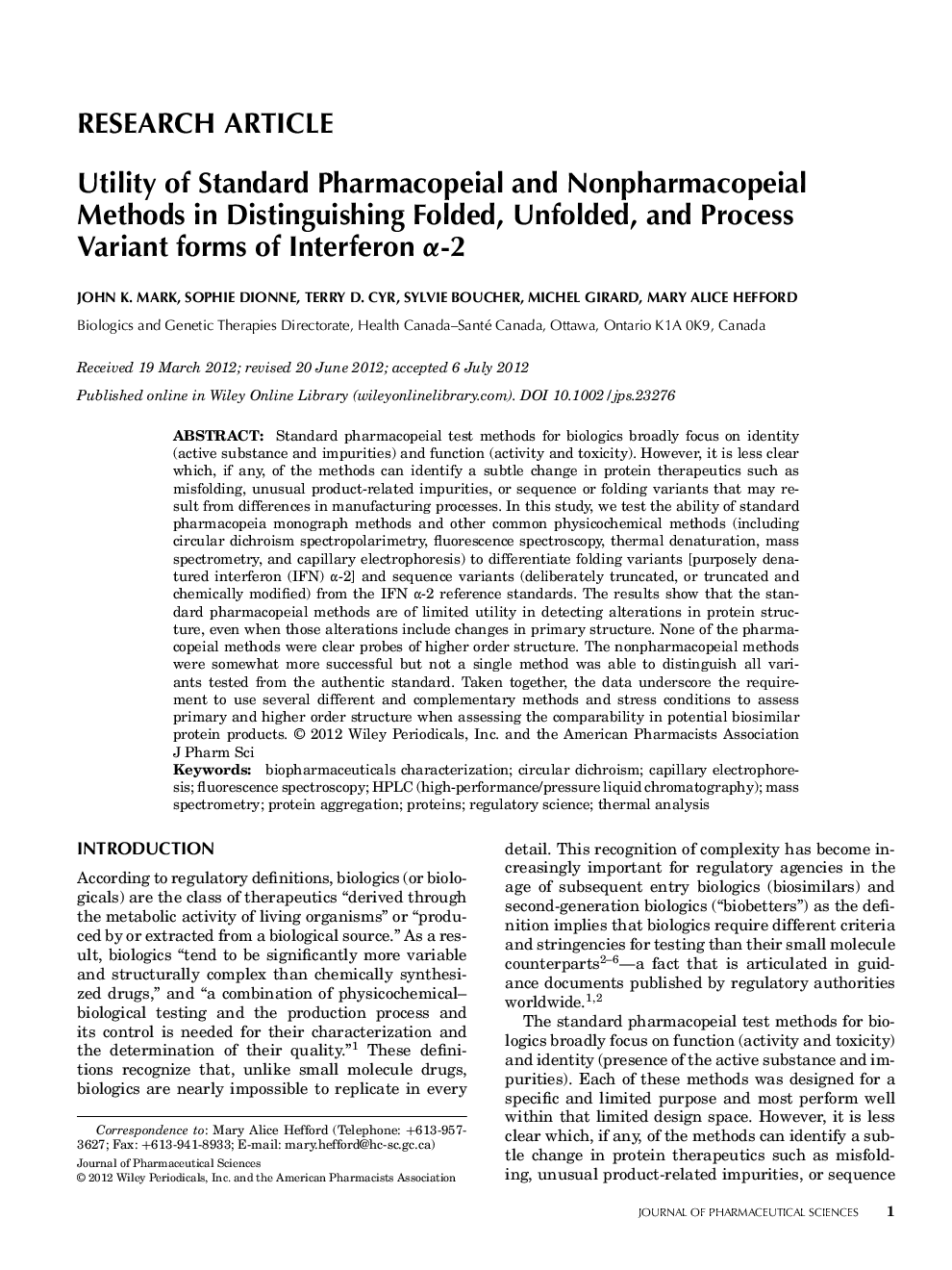| Article ID | Journal | Published Year | Pages | File Type |
|---|---|---|---|---|
| 2484876 | Journal of Pharmaceutical Sciences | 2012 | 15 Pages |
Abstract
Standard pharmacopeial test methods for biologics broadly focus on identity (active substance and impurities) and function (activity and toxicity). However, it is less clear which, if any, of the methods can identify a subtle change in protein therapeutics such as misfolding, unusual product-related impurities, or sequence or folding variants that may result from differences in manufacturing processes. In this study, we test the ability of standard pharmacopeia monograph methods and other common physicochemical methods (including circular dichroism spectropolarimetry, fluorescence spectroscopy, thermal denaturation, mass spectrometry, and capillary electrophoresis) to differentiate folding variants [purposely denatured interferon (IFN) α-2] and sequence variants (deliberately truncated, or truncated and chemically modified) from the IFN α-2 reference standards. The results show that the standard pharmacopeial methods are of limited utility in detecting alterations in protein structure, even when those alterations include changes in primary structure. None of the pharmacopeial methods were clear probes of higher order structure. The nonpharmacopeial methods were somewhat more successful but not a single method was able to distinguish all variants tested from the authentic standard. Taken together, the data underscore the requirement to use several different and complementary methods and stress conditions to assess primary and higher order structure when assessing the comparability in potential biosimilar protein products. © 2012 Wiley Periodicals, Inc. and the American Pharmacists Association J Pharm Sci 101:3672-3686, 2012
Keywords
Related Topics
Health Sciences
Pharmacology, Toxicology and Pharmaceutical Science
Drug Discovery
Authors
John K. Mark, Sophie Dionne, Terry D. Cyr, Sylvie Boucher, Michel Girard, Mary Alice Hefford,
